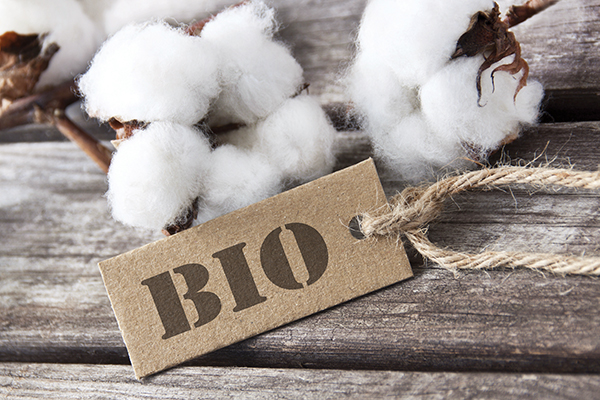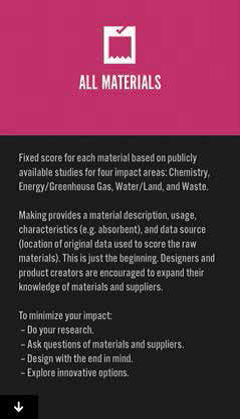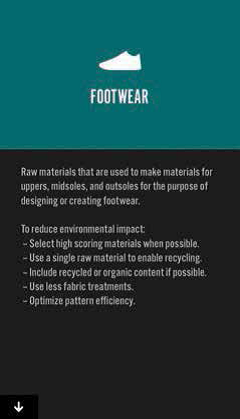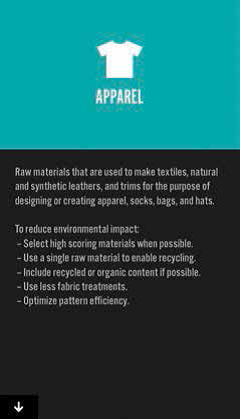By Tina Ly.
So far the main
purpose of a clothing label was to provide washing and composition information.
But clothing labels may have a new
function: help consumers to buy better.
Buy a top made of recycled materials? Buy from a brand with ethical
values? Here are the new questions raised by today’s consumers.
Which brand to buy?
More and more prêt-à-porter brands are creating collection
made of greener materials, such as items made of organic or recycled materials.
Besides, there are more and more “greener fashion guides” that can be found
surfing the web. For example the Eco Fashion World provides a list of
sustainable designer brands and online eco fashion stores based on brand names,
online stores, cloth’s categories, eco-criteria or countries.
Source: http://www.ecofashionworld.com/
New symbols for
clothing label?
Each brand is evaluated based on eco criteria by the Eco
Fashion World:
Source: http://www.ecofashionworld.com/
- · Vegan: products made without animal materials
- · Ethically produced: products made with respect for people and the environment
- · Craft/Artisan: products made using artisan skills preserving old traditions
- · Custom: made-to-order products
- · Fair Trade Certified products
- · Organic: natural fibers grown without the use of pesticides or other toxic products
- · Recycled: products made with recycled materials
- · Vintage / Second-hand
However, all brands do not necessary comply with all these
eco criteria.
Another fashion web guide Style With Heart is also offering
a list of brands based on category such as Fair Trade, ethical fashion, organic
clothing, eco-friendly items, recycled items, and vintage.
How to choose: 100% organic or 100% recycled?
Nike has goes on with innovating in
sustainability. After its Nike store made up with 100% trash in Shanghai, Nike
has launched the NIKE Material Sustainability Index (NIKE MSI). This index ranks
materials such as cotton or polypropylene in 4 impact areas:
- Chemistry
- Energy/Greenhouse Gas,
- Water/Land
- Physical waste
Nikeresponsibility.com, with the message “materials matter”,
informs consumers about his/her impact on the environment based on the materials
chosen using the NIKE MSI.
NIKE MSI index is higher (better) if the hoodie is made of organic
cotton fabric
The purpose of this index is to provide a vast range of data,
regarding materials used to produce clothing, shoes or accessories, to designers
and creators.
Furthermore, a free smartphone application has been designed
relying on NIKE MSI data: MAKING app.
This app could be seen as a source of information to guide the user to
choose the “right” material, as it helps understand the environmental impacts
of the choices made. Indeed, each material is ranked and the app enables the
user to compare different materials.
For example rubber versus cotton: considering all the
criteria mentioned above but also the environmental impact, the recycling
capacity and the supplier practices, rubber material is ranked as No. 1 in NIKE
MSI when the cotton is ranked at the 11th position.
In addtion, each material presents a breakdown of its NIKE
MSI in the 4 impact areas; which means that the best material, currently the
rubber, may be ranked as number one as an overall but may be ranked:
- · 16th in chemistry impact
- · 2nd in energy impact
- · 2nd in water impact
- · 6th waste impact
The NIKE MSI is also affected by the use of recycled or organic
material and the supplier choice.
MAKING app also engages consumers to research information
about how to consume more sustainably and question the production chain from
the material used to the end life of a product.
Screens of MAKING app
This app and index could also be used by any consumer while
buying clothes: clothing label may be checked with more care and attention!
Therefore, designers and creators may be encouraged more and more by consumers
themselves to think better of materials to be used.










